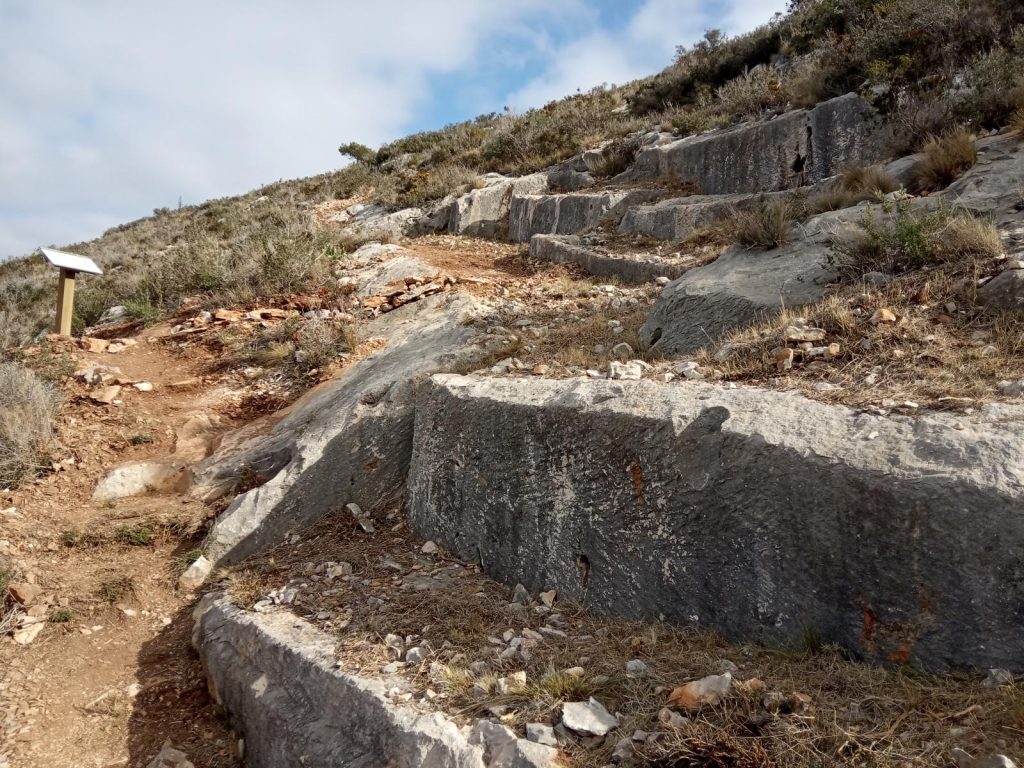A limestone quarry, probably from the Roman period, was discovered during the preparation and adaptation of the path «Camí de la Serp-Puig de la Llorença-Cala llebeig» in November 2018.
This type of material had several uses, especially in architecture, to make square stone blocks or keystones, water canals or the stone pieces for presses or mills. The quarry workers themselves were responsible forextracting the stones which would be later molded.
Stone mining had various stages. First, the land was cleared and extracted until a limestone deposit was found. Once the front part of the quarry had been prepared, the stone extraction began, from outside in, from top to bottom, by forming steps or terraces.
First, the the future block was marked by grooves a couple of centimetres wide. If you look carefully, a block that was never extracted may be observed. Standard measures of approximately one Roman foot (about thirty centimetres) or its mutiples of it were employed.
Holes were made over the groove with a pointed chisel, where wooden or metal wedges were inserted in straight single lines, so the rock would crack due to pressure and finally separate. Once separated, the block was smoothed down and uniformly squared, so that it could be given its final touches in the workshop.
The diverse extraction fronts of this quarry eventually formed these long steps or terraces.
